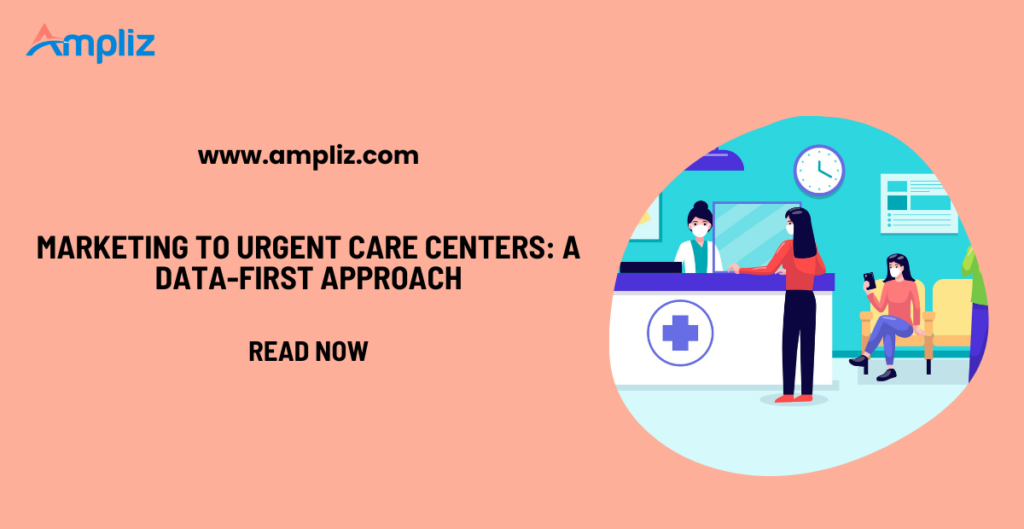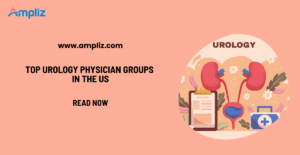Introduction: Why Market to Urgent Care Centers?
Urgent care centers are experiencing significant growth in the United States. With rising emergency room costs and growing demand for fast, affordable healthcare, patients are turning to urgent care facilities as a convenient alternative. As of 2025, the U.S. has over 12,000 urgent care centers, with continued expansion projected over the next decade.
This rapid growth has attracted attention from healthcare vendors, SaaS providers, and medical device manufacturers. Whether you’re selling diagnostics equipment, EMR systems, telehealth platforms, or staffing solutions, urgent care centers represent a high-opportunity market.
But reaching these centers effectively requires more than cold emails or generic outreach. It calls for a data-first marketing approach — one that leverages real-time intelligence to target the right contacts, craft relevant messages, and drive better results.
Why Urgent Care Centers Are Prime Targets for B2B Healthcare Marketers?
Urgent care centers are not just healthcare providers they are dynamic, fast-moving businesses focused on delivering efficient, on-demand care. Many operate independently or as part of small networks, giving them the flexibility to adopt new tools and technology quickly.
These centers rely on a wide range of solutions to improve operations, including:
- Clinical and operational software (EMRs, scheduling, analytics)
- Diagnostic imaging tools and lab equipment
- Staffing services and workforce management platforms
- Medical consumables and PPE
- Billing, RCM, and insurance verification tools
For B2B marketers, this makes urgent care clinics ideal customers — they often have the budget, need, and authority to make purchase decisions quickly. Moreover, the leadership at these centers is often compact, with decision-makers like Medical Directors, Physicians, Operations Managers, and Procurement Officers directly involved in vendor selection.
From Traditional Outreach to Data-Driven Marketing
Historically, marketers approached urgent care centers with mass emails, cold calls, or directory-based outreach. But this spray-and-pray approach often results in poor engagement, low conversion rates, and wasted ad spend.
Enter data-driven marketing — an approach that leverages healthcare-specific data to:
- Target the right contacts
- Segment based on behavior or firmographics
- Personalize messaging to address real needs
- Time outreach based on buying signals
For example, if a center recently expanded or adopted telehealth, a data-first platform could flag this as an intent signal — allowing you to reach out with relevant messaging before your competitors do.
This level of precision improves both engagement and ROI, making your marketing efforts significantly more impactful.
What Data Matters Most When Targeting Urgent Care Centers?
Not all data is created equal. For your marketing to succeed, you need a combination of accurate, compliant, and context-rich data that tells you more than just a name and email. Here are the most critical data types:
Firmographic Data:
- Location: Target centers based on region, city, or zip code.
- Size: Understand patient volume, staffing size, or number of providers.
- Ownership Type: Independent, chain-owned, or hospital-affiliated.
Technographic Data:
- What EMR/EHR systems they use (e.g., Athenahealth, eClinicalWorks)
- Whether they’ve adopted telehealth or virtual triage platforms
- Use of diagnostic tools like X-ray, ECG, or lab equipment
Knowing this helps tailor your messaging. For example: “Integrates seamlessly with Athenahealth.”
Contact Data:
You need to reach decision-makers, not front-desk staff. That includes:
- Medical Directors
- Clinical Operations Managers
- Procurement Officers
- CEO/COO for multi-location centers
Ensure data includes verified email addresses, phone numbers, and LinkedIn profiles.
Behavioral and Intent Data:
- Are they browsing for new EMR platforms?
- Did they download a whitepaper or attend a webinar recently?
- Are they hiring rapidly?
These behaviors indicate readiness to engage and buy — enabling well-timed outreach.
Platforms like Ampliz provide a blend of these data points in a single dashboard, giving you the power to act strategically.
How to Build a Qualified Urgent Care Lead List Using Data?
Building a high-performing lead list means going beyond basic directories or public listings. Here’s a step-by-step strategy using healthcare data platforms:
Step 1: Define Your Ideal Customer Profile (ICP)
Identify the urgent care center attributes that align with your solution, such as:
- Centers with 2+ locations
- In regions with high patient demand
- Using outdated systems or tools
- Looking to scale operations
Step 2: Filter Based on Key Criteria
Using a data platform, filter leads by:
- State or metro area
- Technology stack
- Decision-maker titles
- Recent hiring or expansion activity
Step 3: Export a Clean, Compliant List
Ensure the data is:
- Verified and up-to-date
- GDPR, HIPAA, and CAN-SPAM compliant
- Segmented for email, call, or LinkedIn outreach
With Ampliz, for example, you can generate hyper-targeted lead lists in minutes — giving your team an edge in outreach campaigns.
Best Channels to Reach Urgent Care Decision-Makers
Now that you have the right list, you need to reach out through the right channels. A multi-channel strategy ensures you’re not putting all your eggs in one basket.
Email Marketing:
Still one of the most effective channels — when done right. Personalize subject lines, reference specific pain points, and include clear CTAs. Use marketing automation to nurture leads through the funnel.
LinkedIn Outreach:
LinkedIn is ideal for reaching roles like COOs, MDs, and procurement heads. Use InMail, connect with value-driven messages, and share relevant content like case studies or ROI calculators.
Programmatic Advertising:
Use display or retargeting ads to engage prospects after they visit your website or interact with your emails. This keeps your brand top-of-mind across the web.
Direct Mail:
High-touch and less crowded than inboxes. Send product samples, educational booklets, or even personalized gifts to high-value targets.
Webinars and Events:
Educate your audience on trends like value-based care, telehealth integration, or staff efficiency. Position your brand as a trusted advisor.
A data-first outreach strategy leverages these channels in sync, increasing response rates, brand visibility, and conversions.
What Messaging Resonates with Urgent Care Leaders?
Effective messaging is what separates spam from value. To connect with urgent care executives, your message must be:
- Problem-solving: Address real-world challenges they face.
- Data-backed: Include metrics, case studies, or outcomes.
- Clear and concise: Respect their time — get to the point.
Some common pain points include:
- Managing high patient volumes
- Staff burnout and turnover
- Reducing operational inefficiencies
- Delays in billing and reimbursement
- Adopting new technology without disrupting workflows
Use personalized messaging that acknowledges their role. For example:
“Hi Dr. Stevens, urgent care centers like yours are seeing a 25% increase in patient load. Our triage software reduced wait times by 32% for a 5-location clinic. Can we show you how?”
When you combine this approach with targeted data, you’ll see dramatic improvements in campaign performance.
Common Mistakes to Avoid When Targeting Urgent Care Clinics
Even the best marketers can fall into traps. Here are key mistakes that derail urgent care outreach:
Using Outdated or Generic Data
Bounced emails, incorrect names, and irrelevant contact titles signal lazy outreach and ruin your credibility.
Sending Generic Messages
Mass email blasts with no personalization lead to low engagement and high unsubscribe rates.
Ignoring Compliance
Healthcare marketing must comply with HIPAA, CAN-SPAM, and GDPR. Using non-compliant data sources risks legal trouble and spam blacklists.
Failing to Follow Up
Most deals are closed after 5-8 touchpoints. A single email won’t cut it. Use marketing automation to nurture leads.
A data-first approach safeguards against these issues by providing accurate data, intent insights, and automation-ready exports.
Future Trends in Urgent Care Marketing
The urgent care market is evolving quickly. Staying ahead of the curve requires marketers to embrace change and innovation.
Telehealth Integration
More urgent care clinics are offering virtual visits. Vendors offering telehealth tools or integration platforms have new opportunities here.
AI-Powered Solutions
AI chatbots, automated check-ins, and intelligent triage systems are reducing administrative burden.
Retail Partnerships
Urgent care centers inside Walgreens, Walmart, and CVS are growing. These partnerships create new B2B vendor access points.
Focus on Value-Based Care
Payers and providers are aligning on outcomes over volume. Messaging should reflect how your product improves care efficiency, reduces readmissions, or boosts patient satisfaction.
Anticipating and addressing these trends in your campaigns sets you apart as an innovative, insightful vendor.
How Ampliz Helps You Market to Urgent Care Centers Efficiently?
Ampliz is a leading healthcare data intelligence platform that enables you to build, target, and convert urgent care prospects faster and smarter.
What You Get with Ampliz:
- Verified contact data for urgent care executives
- Technographic and firmographic filters
- Intent insights and behavioral triggers
- CRM-ready exports for seamless outreach
- GDPR/HIPAA-compliant data sourcing
Whether you’re running ABM (Account-Based Marketing), cold outreach, webinars, or LinkedIn campaigns, Ampliz helps you spend less time hunting and more time closing.
Conclusion: Powering Better Outreach with a Data-First Mindset
Marketing to urgent care centers is no longer about brute-force outreach — it’s about smart, data-driven strategies. From identifying high-potential leads to crafting personalized messaging and timing your outreach based on intent, every step is powered by data.
In a competitive market, the vendors who win are those who use tools like Ampliz to make smarter decisions, reach the right people, and convert faster.
If you’re ready to elevate your urgent care marketing strategy, start by putting data at the center of your game plan.
✅ FAQs
Q1: How many urgent care centers exist in the U.S.?
There are over 12,000 urgent care centers across the U.S., and the number continues to grow due to increasing demand for fast, convenient, and affordable healthcare.
Q2: Who are the key decision-makers at urgent care centers?
Key roles include Medical Directors, Clinical Managers, Operations Heads, Procurement Officers, and Owners—especially in multi-location or private centers.
Q3: What makes data-first marketing more effective?
It enables precise targeting, personalization, and better timing, improving open rates, reducing bounce rates, and increasing conversion.
Q4: What platforms provide urgent care contact data?
Healthcare data platforms like Ampliz offer real-time verified contact data with advanced filters based on firmographics, technographics, and intent signals.
Q5: What channels are best for urgent care outreach?
The most effective channels are email, LinkedIn, webinars, programmatic advertising, and direct mail, especially when used in a multi-touch strategy.




